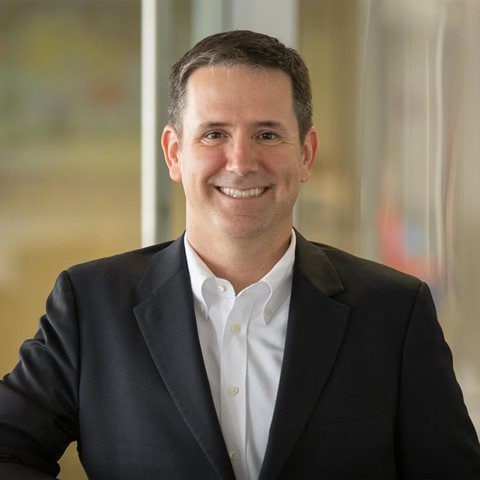In the United States, the COVID-19 pandemic has devastated working women and minorities—and put faster progress on diversity front and center on the leadership agenda.
In this episode of McKinsey Talks Talent, McKinsey leaders and talent experts Bryan Hancock and Bill Schaninger speak with McKinsey Global Publishing’s Lucia Rahilly about the urgent need to increase inclusiveness at work, including how your talent practices could be helping—or hindering—your efforts. For more from Bryan and Bill, subscribe to the McKinsey Talks Talent podcast on Apple Podcasts, Google Podcasts, or the audio player of your choice.
Bright spots are tough to find
Lucia Rahilly: Many leaders have made renewed commitments to fostering more diverse, more equitable, and more inclusive workplaces in the wake of the COVID-19 pandemic and the killing of George Floyd. But leaders have been talking about improving representation for women and minority demographics for what seems like a painfully long time. Do you think things will really be different now?
Bill Schaninger: The good news is that we see a meaningful shift in attention to these issues and a real commitment to, and investment in, doing better. Just focusing on the kind of environment leaders are creating—by itself, that isn’t inclusive. We need to ask ourselves whether we’re really accepting of all kinds of people. Are we allowing people to bring their whole selves to work? And we need to be much more thoughtful about opportunities throughout the talent life cycle, from where we source talent to the skills we demand, promotions, development opportunities—all the way through.
The bad news is that COVID-19 runs the risk of wiping out six years of advances on the diverse-workforce front. That’s devastating. COVID-19 has disproportionately affected women and people of color, who tend to be concentrated in sectors that have taken a real pounding during the pandemic.
Lucia Rahilly: Where have companies made progress?
Bryan Hancock: Bright spots are tough to find. In the managerial and the officer ranks, we’re seeing more diverse folks promoted, which—over time—will create more proportional representation in management. But for Black employees, for example, the journey will take 95 years on current course and speed. So while we’re paying attention, the scale of the solution is not yet matching the scale of the problem.
While we’re paying attention, the scale of the solution is not yet matching the scale of the problem.
Lucia Rahilly: The number of female CEOs in the Fortune 500 is abysmal, and the number of Black CEOs is even worse. What about boards? Are we seeing progress there—and, if so, why isn’t this having a more positive impact?
Bryan Hancock: Board representation is coming up. But boards have a governance, not a management, role. If you’re considering whether a company is right for you, you may look at the board. But you may also ask, “Who’s the vice president in the group I’ll be in? Who’s the senior vice president? Is there anyone who looks like me in that entire chain?” We need to have representation in leadership—clear signals that say, “There’s a place for people like you here.” The board sends a good signal, but I don’t think it has the same day-to-day impact leaders do.
Subscribe to the McKinsey Talks Talent podcast
Rewriting the rules of recruiting
Lucia Rahilly: Let’s talk about challenges within the talent life cycle, starting with acquisition. What barriers do women and diverse populations face being recruited into jobs?
Bill Schaninger: In sourcing, there’s a real difference between equal and equitable. Suppose we said, “All interns are created equal. We pay them nothing.” The people who can afford an entire summer without getting paid are likely already coming from a position of privilege. I reflect on my own experience as an undergraduate, particularly after my father died. The thought of working for nothing between my junior and senior year or the year following—it was a nonoption. I needed to make money.
Don’t curtail the funnel out of the gate because of convention and call it equal. It’s probably not equitable. You could be forgoing amazing talent just by how you look, where you look, and how you engage potential recruits. This is an opportunity to rewrite some of the rules.
You could be forgoing amazing talent just by how you look, where you look, and how you engage potential recruits. This is an opportunity to rewrite some of the rules.
Lucia Rahilly: AI [artificial intelligence] very famously risks integrating human bias into its algorithms, and recruiters are relying more and more on automation. Do you think technology helps or hurts diverse candidates in the assessment process?
Bryan Hancock: Good technology helps—technology that really looks at what you’re assessing for and ties that to a job. But suppose you ask how a candidate fits with the norms of a group. If the group is largely white and male, you should pause and consider whether you might be incorporating bias in those selections.
There are two different ways AI can be used. One is building on science to help get deeper insights. The other is comparing against an existing population. I’d be more cautious on the latter.
Bill Schaninger: Good quantitative techniques can help manage incredibly large data sets. Sometimes you just use technology as a rough screening tool. But I wouldn’t go down the road of meaningful prediction of success until you’re really thoughtful on validation.
You need to challenge—aggressively—all your assumptions about the knowledge, skills, attributes, and experiences required. In many cases, we screen based on our own preferences rather than what’s actually predictive of success. And then you need good old-fashioned validation. You need adequate performance data, and you need to track what happened to people you didn’t pick. Then you can feel more certain that what you’re doing makes sense and doesn’t institutionalize bias because of the way your models are built.
Lucia Rahilly: How does bias take effect in assessment tools like gamification?
Bryan Hancock: It depends. Suppose the game is grounded in a science-based assessment—a substitute for a pencil-and-paper assessment, validated for outcomes against more traditional assessments. Then it’s a more engaging way of getting at some of the same underlying attributes we test for. There are also games that aspire to do more. In those cases, we should be very clear on what we expect the game to solve, how we’re testing for different biases, and how the game is won if there are multiple inputs into the process.
I’m hopeful. I think gamification can be an engaging way of getting a lot more data about individual candidates. But we need to proceed with caution.
Lucia Rahilly: We’re talking about tools and processes. But how do leaders address the subjective bias that routinely creeps into even the most well-intentioned recruitment efforts?
Bill Schaninger: Language is an early indicator that something is going on that’s at least worth looking at. In our own review rooms, if we hear “What about their presence?” we jump all over it—it’s a classic.
Subtler, but maybe more pervasive, are underlying assumptions about what people need to know, the skills they need, the attributes that make them successful. There you have to be brutal about asking, “Is there any evidence to suggest this actually differentiates between good performers and not?” If not, it has no business being in the conversation.
Getting more precise on what inclusion really means
Bryan Hancock: A lot of what we’re talking about in talent acquisition is the science of assessment and being clear on what matters objectively to job performance. A lot of companies are actively thinking about this. You see it in unconscious bias training, in the structure of assessments, in the assessment teams that big companies are rolling out. And, importantly, you see it in the data.
In our recent Race in the Workplace report, we looked at Black representation in entry-level corporate jobs in the United States, which turned out to be at parity with the US Black population more broadly. We clearly need to stay vigilant on assessments for the front line. But to me, the bigger opportunity is how to think more rigorously about embracing these entry-level workers and being very deliberate in advancement.
Lucia Rahilly: That’s a very commonly voiced challenge—that women or people of color exit companies prior to ascending the ranks. Suppose you’ve got a relatively diverse population at that front end of the pipeline but you’re losing them. What do you do?
Bryan Hancock: This is where to think not only about diversity but also equity and inclusion. What’s the environment for women? For people of color? Are we creating the right communities and supporting mechanisms? Having open conversations about what it takes to succeed? Giving good feedback consistently? Being good sponsors? All those factors together help people advance. And we know there are gaps today.
Take sponsorship. Eighty-seven percent of companies we surveyed had some form of a sponsorship program. But fewer than half of the people across races said they had a sponsor. One thing we need to do is close that disconnect.
Eighty-seven percent of companies we surveyed had some form of a sponsorship program. But fewer than half of the people across races said they had a sponsor. One thing we need to do is close that disconnect.
Lucia Rahilly: Let’s take a step back. I admit that as a woman, I sling around the term “inclusion” with authority, but I’m not sure I could define it precisely. What are we talking about when we talk about an inclusive environment?
Bill Schaninger: We’ve been studying this—trying to come up with a better way of talking about it, trying to understand how people experience inclusion. Acceptance, the experience of trust and intimacy, belonging, affinity, the idea that you have influence or agency—those elements wrap together.
A little more precisely, most people characterize inclusion on two levels: their own direct, felt experience and the way they perceive their organization more broadly (exhibit). What might explain the differences between those two? The answer completely aligns with classic organizational psychology—the relationship with the boss, the relationship with peers, and the experience of the policies, practices, and rules the company writes and enforces. You’ve got those three levers to pull.

For many things at work, your relationship with the boss is the single most important relationship. But when we’re talking about an inclusive environment, the behavior of your colleagues appears to matter as much as—if not a bit more than—your boss’s behavior. That doesn’t mean bosses get a pass. But the more collaborative our work, the more opportunities we have for interactions that make the workplace feel inclusive or not. We think there’s a whole new tranche of ideas about inclusion being made or broken, based on the team environment.
The more collaborative our work, the more opportunities we have for interactions that make the workplace feel inclusive or not. We think there’s a whole new tranche of ideas about inclusion being made or broken, based on the team environment.
Lucia Rahilly: What’s an example of how we might individually support inclusivity on our teams? Here it might be helpful to acknowledge that one of us is a woman, but all of us are white.
Bryan Hancock: Particularly if you’re a white male leader, I think you’ve got to be vulnerable to making mistakes. Recognize that you don’t know exactly how to have the conversation and might not say exactly the right thing. But be curious. Ask “How can we help? How can we make this a more inclusive environment? What can we do better?” Being a curious learner can help start the conversation on what some of the underlying pieces might be.
Lucia Rahilly: Do you think we risk placing an undue burden on colleagues from diverse demographics when we ask them to educate us about the experience that they have in the workplace?
Bryan Hancock: It can absolutely be a burden for companies to create a bunch of additional tasks. Leaders should be thoughtful and inclusive about getting feedback and input but not at every turn ask, “What do you think? You come up with the solution.”
It’s a little different on the team level, where you might ask, “Hey, is anything I’m doing bugging you? I noticed you’ve got this responsibility outside work; how are you doing?” That’s a different conversation, not abstract—“What can we be doing to advance all women here?”—but personal—“What can we be doing to better support you?” I think that helps drive an inclusive environment without creating an additional burden.
I was just on a call about training on this front. In many cases, the majority in organizations are still white men, and usually straight white men. And of course, often the majority—people you need to change the environment—are the least likely to see the need for training. We need to construct an environment where these employees raise their hands and say, “I’m a middle-aged white guy with no firsthand experience of what we’re talking about here. But I sure feel the right thing to do is to be an ally, to actively try to make things better.”
That could mean inviting people into meetings they wouldn’t normally attend, changing routines to be more thoughtful about bringing new people into a group, or pulling different people into conversations and decision making. To me, a big portion of this is getting the majority to see the ease with which they can step into a place of allyship. It’s not we versus they. It’s actually just we. And we have an opportunity to do much better.
Lucia Rahilly: How do you see the role of affinity groups in supporting the experience of diverse employees?
Bryan Hancock: Affinity groups have been shown to be very effective at building community and creating connectivity—seeing other people like you and hearing stories of what made them successful. They’ve had less of a proven effect as an avenue toward promotion. We still need other support mechanisms, like sponsorship, to advance women and people of color. We can’t put it all on affinity groups to solve.
Breaking the same-old talent cycle
Lucia Rahilly: We know career mobility can be a challenge for women and for diverse workers. Yet many organizations take pride in narrating themselves as meritocracies and sometimes perceive the notion of actively creating opportunities for more diverse talent as in tension with meritocratic principles. Bryan, I’m interested in what the data in the recent Race in the Workplace report revealed about whether Black workers perceive career mobility as meritocratic.
Bryan Hancock: In our research, we found that no one perceives their workplace to be meritocratic. The majority of white workers and the majority of Black workers did not perceive the current process to be meritocratic. And when you look at our broader performance-management research, it isn’t that much of a surprise. The majority don’t feel their contributions are recognized fairly at work.
Rather than reinforce this tension, we need to look at the fundamental tenets of a fair meritocracy—ensure we’re having conversations on goals, for example, or giving feedback or linking what an employee is doing today to business performance. That would help raise the perception of fairness. And we’d also probably identify the folks with the merit to advance.

McKinsey Talks Talent Podcast
Bryan Hancock, Brooke Weddle, and other talent experts help you navigate a fast-changing landscape and prepare for the future of work by making talent a competitive advantage.
Lucia Rahilly: At the same time, the zero-sum notion is pretty deeply embedded in American discourse. Meaning, in other words, that the benefits that an inclusive culture might confer get refracted through a prism of competition, so that one person’s advantage is counterweighed by another person’s loss. What does our research say about zero sum and the benefits of diversity overall? That might help leaders navigate that tension a little better.
Bryan Hancock: There’s great research and thinking from PolicyLink describing the curb-cut effect—a term stemming from the Americans With Disabilities Act, which required cuts in curbs so that people in wheelchairs could more easily cross the street. And, yes, people in wheelchairs use curb cuts. But so do lots of people not in wheelchairs: businesspeople with rolling suitcases, parents with strollers. By focusing on meritocracy concerns, you can address what turns out to be an underlying dissatisfier for a wide range of people.
Lucia Rahilly: Part of what we’re seeing is that inclusive environments enable better retention, better engagement. Is there data to show that inclusive environments also enable performance?
Bill Schaninger: When you make it easy for people to bring all their skills and thoughtfulness to innovation and problem solving, they do better. It builds up social exchange. It builds up goodwill. It’s a virtuous cycle. Contrast that with finding out about a meeting after the fact—having your background, your experiences, and your ideas discounted. That’s a vicious cycle. No doubt, this has a direct impact.
Lucia Rahilly: COVID-19 has clearly posed risks to progress. Besides illuminating the exigency of taking action, has the pandemic given rise to any opportunities for leaders to cultivate greater diversity and inclusion in the workforce?
Bryan Hancock: Remote work is one. For example, the US Black population is not equally distributed. Fewer than one in ten Black workers lives in the fastest-growing geographies—places like Provo, Utah, or Austin, Texas. The shift to remote work enables leaders to say, “If I’m setting up an East Coast hub, can I set it up in, say, Atlanta, where there’s a qualified Black population and great HBCUs [historically Black colleges and universities] to provide a talent pipeline?” Remote work allows you to set up hubs in areas where you can deliberately tap into more diverse talent.
Bill Schaninger: If you think about, for example, tech hubs—whether in Silicon Valley or outside Boston or the Triangle in North Carolina or Austin or, to a lesser extent, Denver and Pittsburgh—what’s the common denominator? One if not more prestigious STEM [science, technology, engineering, and mathematics] schools. What’s the other common denominator? In many cases, the concentration of talent in those schools is more of what we already have. There’s an unbelievable self-fulfilling prophecy unless we can break the cycle of investing in, doing deals with, and hiring only from the same places.
When we look at the data, we should be embarrassed. And I think we’re finally in the world where we don’t have to ask—we just demand and expect and hold people to account.
Lucia Rahilly: How should companies hold themselves accountable for their progress, from a data perspective?
Bill Schaninger: Most things get clearer when you track them and make your progress transparent. That normally clarifies mind and effort. But that’s still not enough. Anybody can come up with reasons that it’s not their fault they fell short.
That’s why we need a broader range of actions—to really be thoughtful about sourcing, about who’s getting access to opportunities, about how to give employees a more-than-fighting chance to thrive, not just survive. Diversity from a numeric standpoint ends up becoming an outcome of those actions. Counting shows you’re serious. But what you do to make it stick is what really matters. That’s the enduring annuity.
Lucia Rahilly: The pandemic has obviously posed a destabilizing threat to a lot of companies. Some companies are fighting for survival. What do you say to leaders about the need to prioritize D&I [diversity and inclusion] even as they’re making budget cuts elsewhere in their businesses?
Bryan Hancock: To me, that’s like asking how to tell business leaders to prioritize worker safety while they’re making budget cuts. D&I is good business. It doesn’t have to be at the expense of financial outcomes. Our Diversity Matters research shows it. Lots of research shows it. This isn’t an issue where leaders can say, “We can’t do diversity right now, because we’re under a lot of pressure.” Diversity is one of the things you’ve got to be mindful of in every context, especially now.


